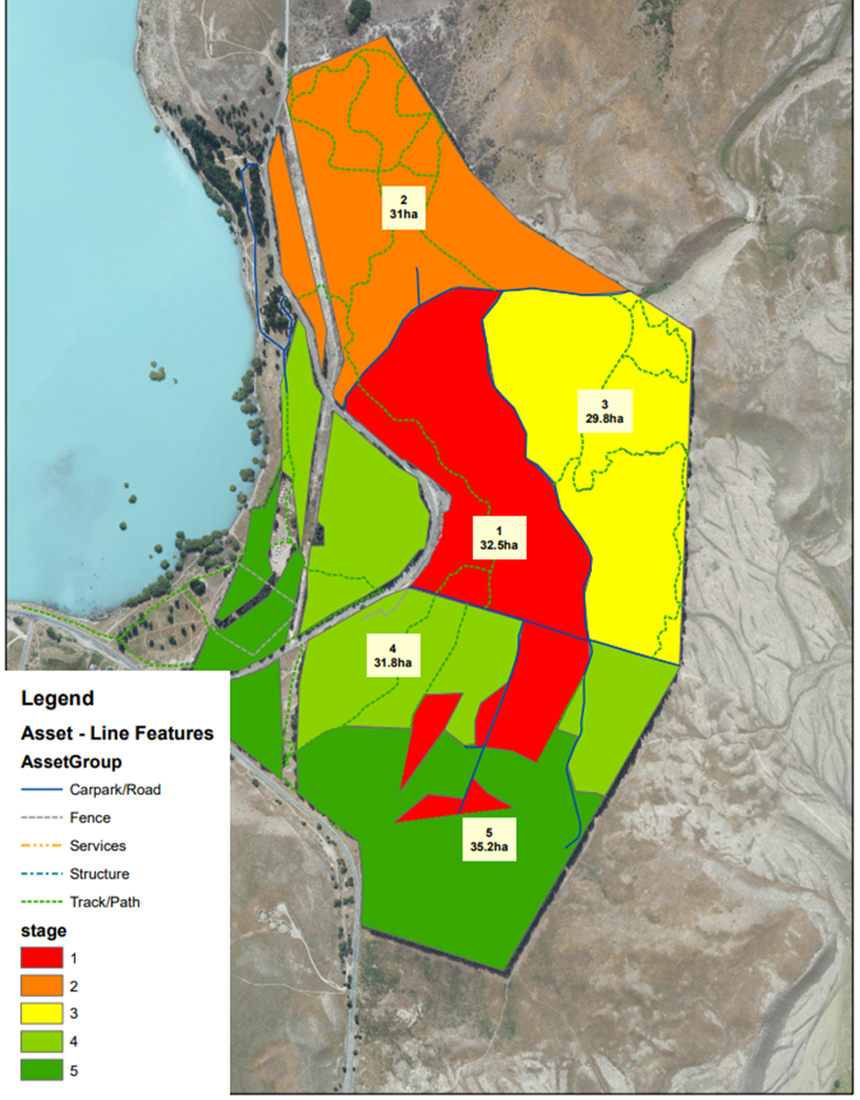
Protecting trails and trees during pest pine removal
Walking and biking trails and ornamental trees in Lake Tekapo/Takapō Regional Park will be protected during an upcoming removal of pest pine trees. Species being protected during removal include oak, English beech, and maple trees, which were planted by the Lake Tekapo Recreational Park Society, as well as Coulter pines, which are famous for their jumbo-sized cones.
"We're doing all we can to protect non-pest trees in the park," said Carl Diamond, Manager, Biosecurity, Parks and Forests. "That includes GPS-marking significant and ornamental trees to ensure they're left standing at the end of the pest conifer removal process."
Detours in place for visitors
Canterbury's southernmost regional park has about 24 kilometres of walking and mountain biking trails. Some sections of these trails and forestry roads will be closed to the public during the conifer removal work, but well sign-posted detours will be in place.
"We ask park users to take note of all signage and avoid areas where work is underway. It will take us about three months to remove the first batch of pest trees, which are in a 33-hectare block in the heart of the park," said Carl.
After 18 months of pest seedling control and site preparation (including mulching and fencing), the cleared area of the forest will be replanted with a mix of native and exotic trees and plants. Find out more about how we've worked with mana whenua, stakeholders, and the community to create our plans for the park.
Preventing wilding spread
Almost all the trees in Lake Tekapo/Takapō Regional Park are conifers (pine trees) listed as pest species in the Canterbury Regional Pest Management Plan (CRPMP).
"Seeds from trees like contorta can travel a heck of a long way - we're talking kilometres - and spread wilding conifers across surrounding private and public land," said Carl. "Removing pest trees from the regional park is a great step towards preventing this spread and protecting the area's biodiversity."
Removing wilding conifers costs New Zealand taxpayers millions of dollars each year. You can find out more about the wilding conifer problem and the eradication programme on our website.
Restoring native biodiversity
Our biodiversity team has worked with Te Rūnanga o Arowhenua to create an exciting replanting plan that includes species with historical links to the area. Native planting areas, which have been named 'te piripiri' by Arowhenua, will include species like dwarf kōwhai, koromiko, tōtara, tussock, and taramea.
"We're looking forward to watching te piripiri grow and expand over time," said Carl. "They'll be a great feature for visitors and an amazing boost to biodiversity in the park."
We have also worked with the Lake Tekapo Recreational Park Society to create a list of ornamental exotic trees, including oak, spruce and cedar, that may also be planted in the park.
Transition to Takapō
Takapō, which means 'to leave at night' in te reo Māori, was the name given to the area by mana whenua and the one that appears on early maps. 'Tekapo' is a misspelling of 'Takapō' that has persisted over time.
To acknowledge our partnership with Ngāi Tahu, we are transitioning from using the name Lake Tekapo Regional Park to Takapō Regional Park. You will see a combination of both Lake Tekapo/Takapō Regional Park and Takapō Regional Park on our website and signage over the coming months.

